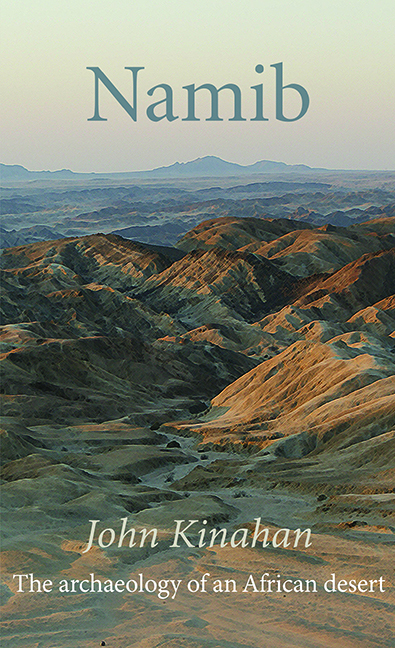Book contents
- Frontmatter
- Contents
- Miscellaneous Frontmatter
- Map
- Dedication
- Preface
- Acknowledgements
- Notes to the Reader
- List of Abbreviations
- List of Figures and Tables
- 1 Introduction
- 2 First Footsteps
- 3 Time’s Arrow
- 4 Mountain Refuge
- 5 Elephants and Rain
- 6 Desert Garden
- 7 The Family Herd
- 8 The Black Swan
- 9 Men in Hats
- 10 The Death of Memory
- Epilogue
- Glossary
- Bibliography
- Index
- Frontmatter
- Contents
- Miscellaneous Frontmatter
- Map
- Dedication
- Preface
- Acknowledgements
- Notes to the Reader
- List of Abbreviations
- List of Figures and Tables
- 1 Introduction
- 2 First Footsteps
- 3 Time’s Arrow
- 4 Mountain Refuge
- 5 Elephants and Rain
- 6 Desert Garden
- 7 The Family Herd
- 8 The Black Swan
- 9 Men in Hats
- 10 The Death of Memory
- Epilogue
- Glossary
- Bibliography
- Index
Summary
The palm of our hand, as if from ancient memory, knows the perfection of shape, balance and purpose in a Pleistocene stone hand-axe. But beyond the purely sensual warmth it imparts – having lain forever baking on some desert valley floor – the tool is mute, or very nearly so. Perhaps it was not then as dry, and a brief time of rain and promise brought this loping, ever watchful early human, pressing deeper into the unknown. The hand-axe, we know, is a distillation of memory, of slowly refined dexterity, the tool a homunculus of the evolving mind. It tells us that someone passed this way, but little more than that.
The Pleistocene epoch is both the longest and the least well understood part of the Namibian archaeological sequence. It stretches from the first clear evidence of a hominin presence about one million years ago, to the end of the Last Glacial Maximum, about 12,000 years ago. This period is mainly represented by surface occurrences of stone artefacts, the age of which can only be estimated from the technique of their manufacture. Yet, this evidence helps us to understand the evolution of the archaeological landscape, and casts important light on human adaptations in response to the ebb and flow of climatic events.
In the Namib Desert, Pleistocene hominins were surely few in number, surviving where food and water were sufficient for their needs. Their range of movement was at first limited to the major drainage systems along which they were able to venture into the desert and exploit animal prey that was similarly tied to ephemeral water and grazing. Although the archaeological evidence is scanty and insecurely dated, the distribution of stone tool assemblages points to an expansion of hominin populations from more humid parts of the subcontinent, reaching in what were probably short pulses, those parts of the desert that were temporarily amenable to occupation. Then, there is an evident expansion in the range of mid-Pleistocene hominins in the desert, spreading out from the river valleys to the plains and mountains. In terms of the Holling adaptive cycle outlined in the previous chapter this growth, or expansion, was followed by a release, or Ω phase in the late Pleistocene with the occupation of sites on the inland escarpment which allowed some respite during dry periods associated with the Last Glacial Maximum commencing about 22,000 years ago.
- Type
- Chapter
- Information
- NamibThe Archaeology of an African Desert, pp. 39 - 80Publisher: Boydell & BrewerPrint publication year: 2022



